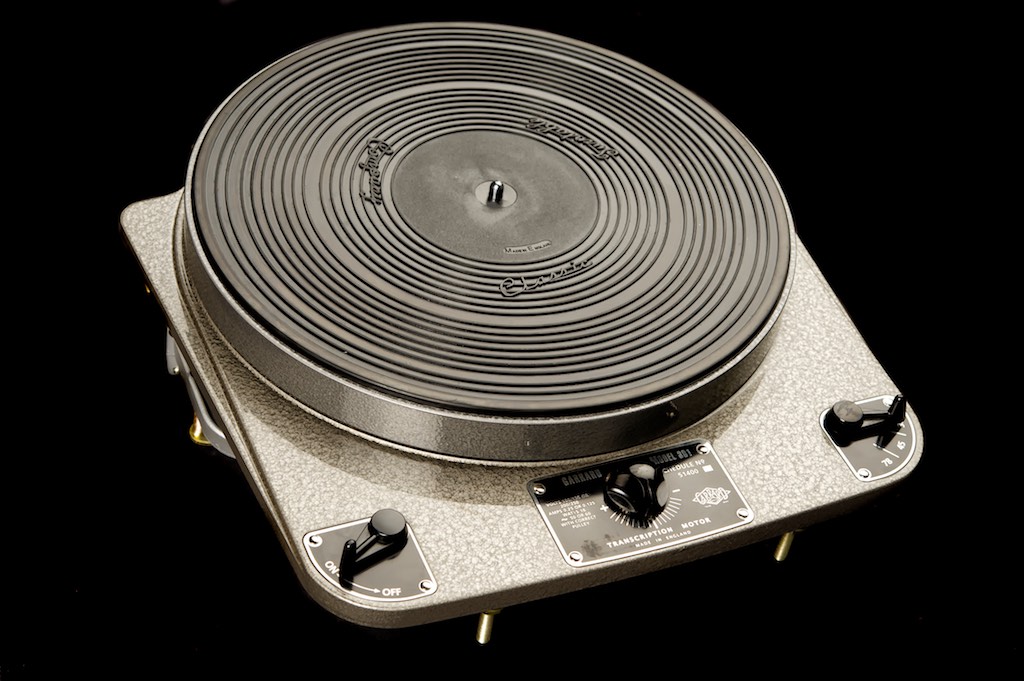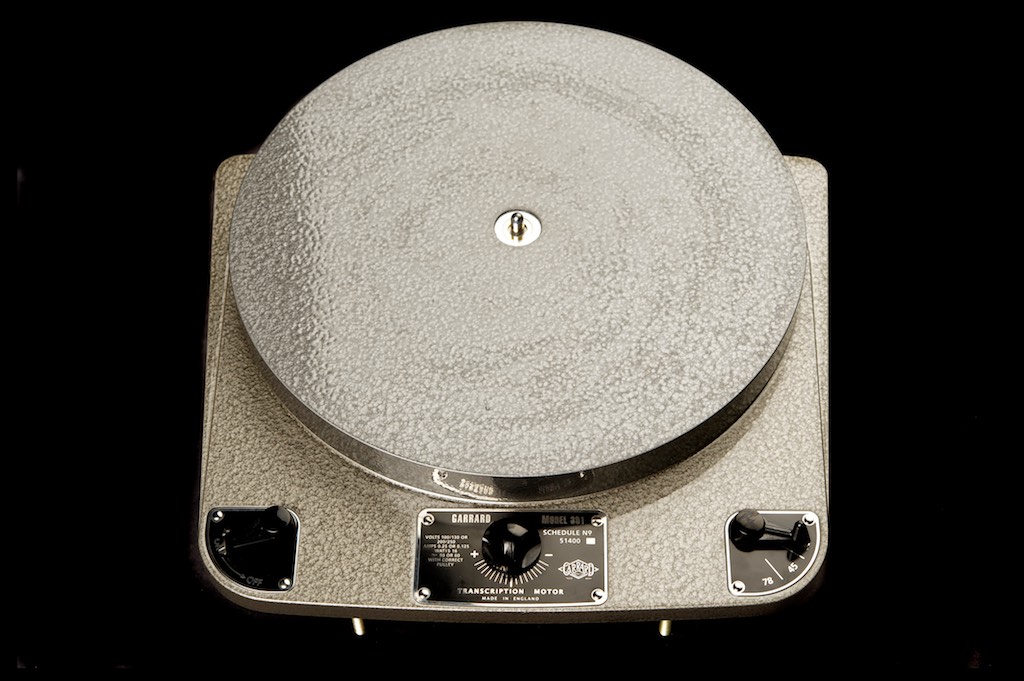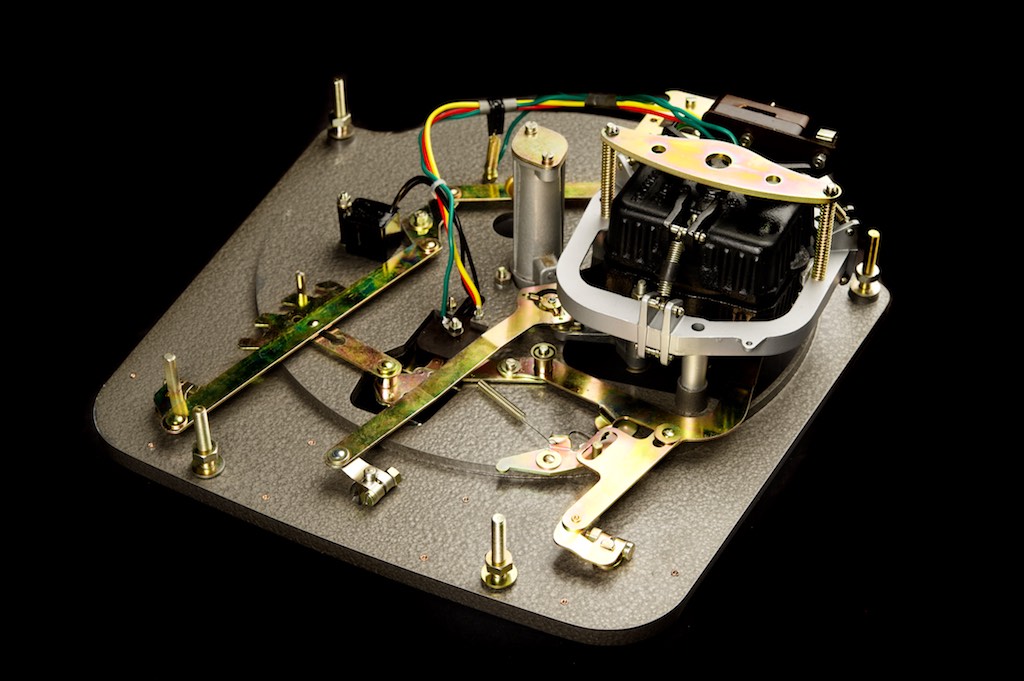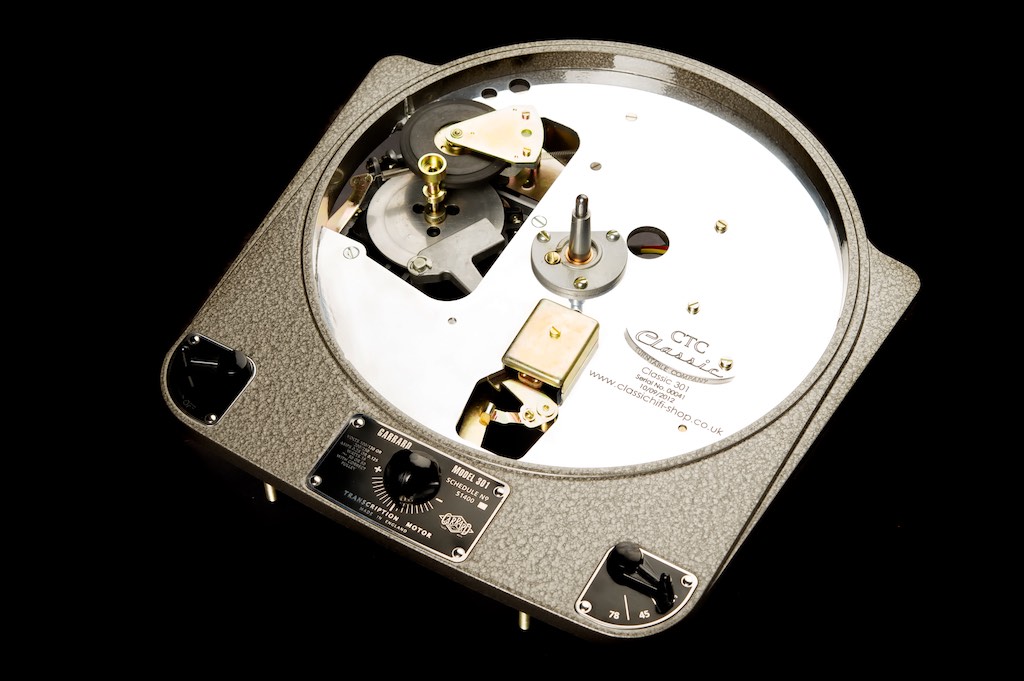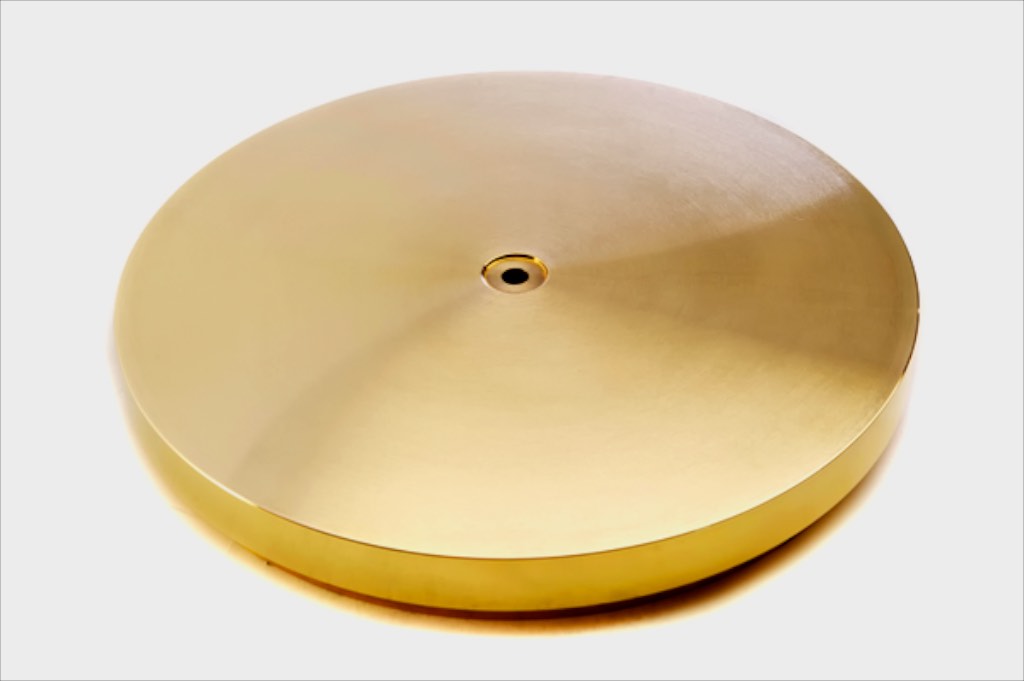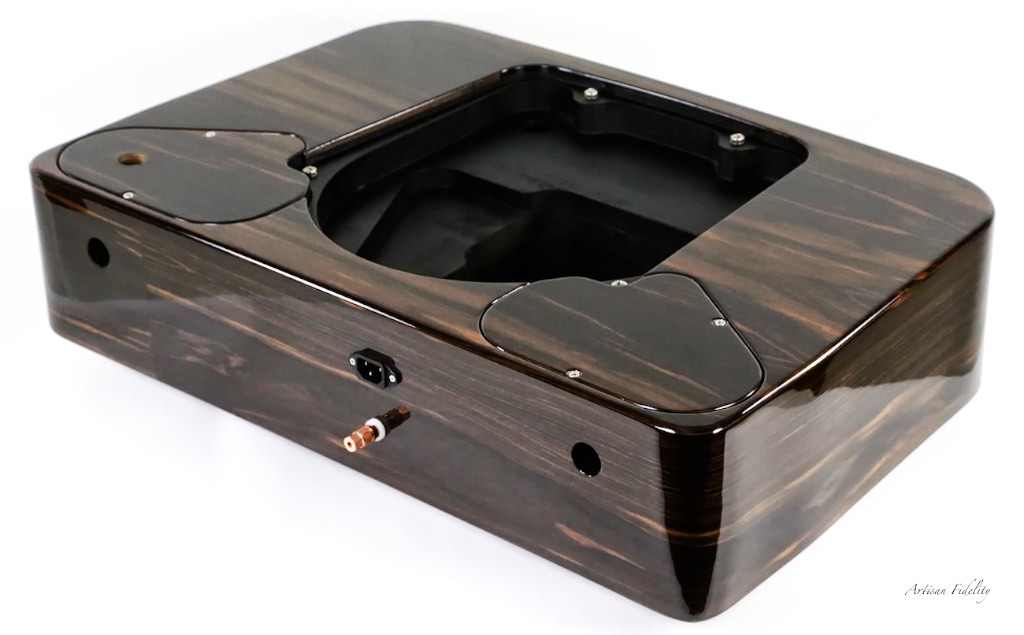These are exciting times for yours truly here at Jeff's Place, and I'm almost beside myself with anticipation about the kickoff of The Garrard Project 2015. 🙂
I’ve always enjoyed Garrard 301 turntables, and I really enjoyed writing the original ‘Garrard Project’ (1, 2, 3) for the Six Moons audio website back in the 2004-2006 timeframe. The original Garrard Project articles for Six Moons were focused on introducing the ultra-musical Garrard 301 to readers as a DIY project that was achievable within a modest budget, and I know a lot of you enjoyed doing Garrard projects of your own.
I had a ball building up a Garrard 301 turntable, listening to music with it, and I know a lot of you did too. I was particularly flattered & humbled when one of my favorite audio writers, Art Dudley, embarked upon his own Garrard project, and mentioned me as an influence in Stereophile, back in 2011. That's really cool.
A lot has happened in the world of Garrards since I wrote those original Six Moon articles, and there are individuals doing some impressive artisanal work in the restoration & modification of the Garrard motor assemblies, the creation of extraordinary plinths, and now there’s a number of very nice 12-inch tonearms to choose from as well.
For my Garrard Project 2015 articles I am focusing on some of the nicest passionista examples of artisan Garrard work being done in the world today.
I am very impressed with what Ray Clark is doing with Garrard 301s at Classic Turntable Company in the UK. Ray may be the ultimate Garrard passionista, the Leonardo da Vinci of high performance Garrards, and he can quite literally do anything when it comes to Garrards!
I am going to do a full discussion of all of Ray's impressive Garrard work in future blog posts, and as part of the upcoming full feature article in Positive Feedback Online, so today I'm just going to give you a brief glimpse into the Classic 301 that Ray is providing for The Garrard Project 2015.
Ray keeps the basic design features of a Garrard 301 intact, but he modifies, hot-rods, and enhances the design to an extraordinary degree. Quite literally, nothing goes untouched, and the result is stunning.
For example, as many of you know, the original 301 had a weak point where the bearing bolts to the chassis. Ray points out that the original cast 301 chassis is not rigid, and "if you grab the base of the bearing housing you can actually flex it".
The flexy original chassis compromises the ultimate performance that can be extracted from the original 301 design, so Ray CNC machines a new chassis out of a solid slab of aluminum (with brass as an option) that is significantly stiffer than the original 301, "especially around the critical areas surrounding the bearing".
Ray also manufacturers brand new hardware, linkages, fascia plates, platter mats, etc., for those restoring original 301s, so you can rebuild your 301 to like-new condition, or for those who don't want to tackle the job themselves, Ray also offers a restoration service.
One of the other weaknesses of the original 301 design was the platter. The original 301 platter was cast aluminum and had issues related to porosity & flaws within the casting. The casting +/- tolerances of those original platters were 'loose' by modern standards too - meaning they weren't a consistent thickness - so they were out of balance. Those out of balance platters would vibrate excessively while spinning if used as-is, so holes were drilled into them to balance them better so they wouldn't vibrate excessively, minimizing the sound quality degradation caused by the platter's vibration.
For his Classic 301 version of a Garrard 301, Ray uses a Precision Audio Components platter that is CNC machined from perfect consistency solid aluminum bar stock to tolerances better than two thousandths of an inch, and it is 7mm bigger in diameter than the original platter. The PAC CNC'd platter is as perfectly balanced as can be achieved with modern state-of-art CNC machinery, and gives a smooth perfect spin that improves sound quality. Ray says, "The extra diameter and extra mass (a standard Garrard platter is 2430 grams, the PAC is 420 grams more) greatly improves the platters inertia and this results in added bass delivery, stability of imaging, etc. Basically it has so much energy in rotation that it takes a lot to stop it spinning."
As an option, Ray makes available a Classic Turntable Company brass platter that is CNC machined from solid brass to tolerances better than two thousandths of an inch. Ray says, "The finished platter is polished on the edges then gold plated to a mirror finish to prevent finger marks." Ray says he likes to use brass for a platter because, "Solid brass is virtually free of any defects and thus perfect for a turntable platter." Like the PAC aluminum platter, the CTC CNC'd brass platter is 7mm greater in diameter compared to an original platter, and weighs a massive 10 kilograms, which about 4 times the mass of an original platter. Ray says, "The difference is staggering, the extra mass greatly improves the platters inertia and results in even better quality of bass delivery, stability of imaging, etc."
While Ray can make you a Classic 301 any way you want, for The Garrard Project 2015 I chose a Classic 301 in a Hammertone finish, because I think it is the most beautiful of the historic Garrard finishes. I also chose to go with the optional CTC CNC'd brass platter for its improvement to performance, but also because I just think it looks beautiful contrasted with the Hammertone finish. The brass CTC platter is a work of art unto itself!
When using the massive CTC brass platter, Ray installs a custom uprated brass spindle and heavy duty spindle thrust plate, which Ray says gives an audible performance improvement all by itself. Ray says the uprated spindle also has a grease applicator, so you can decide for yourself if you like the grease bearing or oil bearing sound better. Here's a link to Ray's Classic 301 page.
I'll have a lot more to say about the details & performance of the Classic 301 in future posts and articles, but I suspect that what I've just shared is enough to whet your appetite and pique your interest, it sure has mine!
If Ray Clark is the Leonardo da Vinci of Garrards, then certainly Christopher Thornton at Artisan Fidelity is the Michelangelo of Garrards. Christopher hand builds a range of plinths for vintage turntables for every budget, and beautiful turn-key statement player systems for those who don't want to fuss with building up something themselves. Take a look at Christopher's Artisan Fidelity website, the photos there will knock your socks off at what he does with turntables - extraordinary!
I had an absolute blast talking to Christopher on the phone about The Garrard Project 2015 on Friday. I learned a lot, and I am in awe of both his knowledge & expertise, and the extraordinary level of artistic expression that his designs possess.
One of the things that I was wondering about (and needing advice on) was whether I should choose a single tonearm plinth or a dual tonearm plinth. I am strongly considering using two 12-inch SPU compatible tonearms, and mounting one with a mono SPU cartridge, and one with a stereo SPU cartridge. SPU's are kind of handy that way, because it's really easy to remove them and swap cartridges.
I have tended to like the look of single tonearm plinths better, they just look cleaner and less busy to me. That was before I saw Christopher's Artisan Fidelity Garrard 301 Statement Plinth in Macassar Ebony, which is just drop-dead gorgeous!
Christopher told me that he has found that dual tonearm plinths can actually sound better than single tonearm plinths because of the extra mass isolation that occurs with the larger & heavier dual tonearm plinths, not to mention the added convenience of having two tonearms that are ready to play music provides.
I am extremely impressed with Christopher's plinths, and I'll have a lot more to say about his methods in future posts & articles. Let me give you a little bit of an introduction now, and then I'll fill you in on the details later.
After establishing that we were going to do a dual tonearm plinth, the next decision was to choose the materials to build it from. A lot of individuals have chosen to build plinths based on bonded layers of Baltic Birch plywood, which is a good way to do it. However, for this project Christopher recommended we use what he considers to be the ultimate method of plinth construction, which he uses in his Artisan Fidelity Statement Plinths, which use multiple layers of cherry hardwood to build up a void-less high-mass plinth utilizing a damped internal design architecture.
Christopher and I talked about several different wood veneers, and settled on finishing the plinth in a beautiful hand-selected Macassar Ebony that is imported from Southeast Asia. The dark Ebony grain in the wood would provide a nice contrast to show off Ray's Classic 301 Hammertone finish, and the Macassar Ebony has beautiful honey-toned highlights that would be nicely drawn out by the gold-plated brass platter.
Christopher says, "To the best of our knowledge, no higher quality Garrard 301 wood-based plinth currently exists on the market, period. The multi layer, damped internal design architecture ensures silent backgrounds and ample dampening for mass loading and direct coupling of the non-suspended Garrard 301 idler drive ... Although our void-less plinth design is technically high mass, it is not in any way over damped, unlike many recent designs which often inhibit liveliness in favor of darkness and deadness, robbing the Garrard 301 of its inherent life, vibrancy and energy. Our composite core constrained layer damped recipe simply allows the maximum energy of the musical landscape to flow without hindrance."
Christopher mills the tonearm boards from resonant damped German Panzerholz.
Christopher says, "Our hand selected team consists of 3rd generation master woodworkers combined with a state of the art machining and finishing facility. Our Garrard 301 plinth design was carefully tuned by ear and finely developed over a period of 4 years for the ultimate musical expression and tonal characteristics. Each Garrard 301 plinth is now individually laid out, core hand assembled, bonded set and precision CNC milled on a state of the art Bridgeport mill, then painstakingly hand finished using premium sealers and surface coatings and skillfully hand buffed to perfection."
Tomorrow, Ray will ship the finished Classic 301 to Christopher, who will then measure it, build the plinth, and custom fit the Classic 301 to it like a glove.
Stay tuned for this developing story - the Garrard Project rides again!
Thanks for stopping by, and as always, from my home to yours, may the music playing make you smile!





